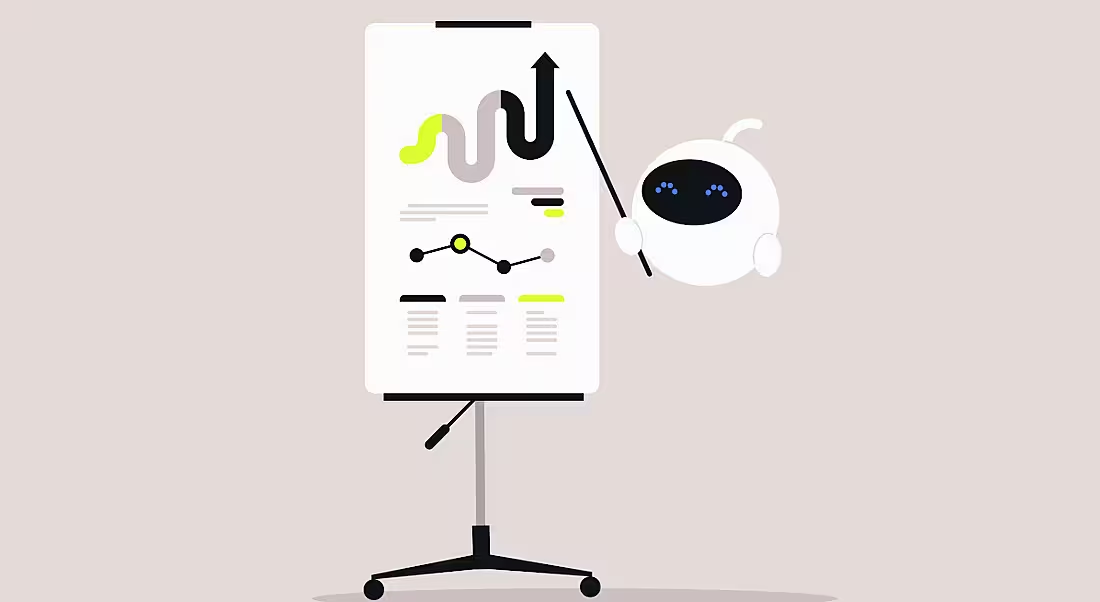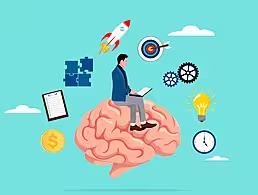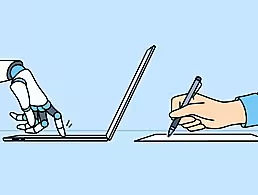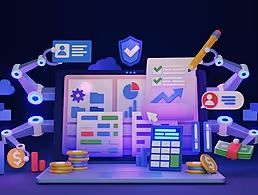BearingPoint’s Gerard Hayes and Lorraine Murphy discuss the role automation and AI will play in the workplaces of the future.
The technological landscape of business is rapidly evolving, with AI leading the change. The successful organisations of the future will be those that reimagined their operating model into one where the humans and AI work collaboratively.
According to Gartner, 76pc of HR leaders believe that if their organisation does not adopt and implement AI solutions in the next 12-24 months, they will be lagging in organisational success compared to those that do.
It is not a case of if, but when this integration of a hybrid human and AI workforce will occur. Many organisations are still in the early stages of understanding their generative AI use cases, undertaking early proof-of-concepts, and exploring possible use case.
The focus is still narrow and limited, but that will need to change quickly for organisations to remain competitive. As AI strategies become more ambitious, organisations will be required to transform themselves across multiple dimensions. It will not be the case of just optimising processes or adopting new technologies, generative AI will fundamentally change the structures, culture and how work gets done in an organisation.
What to consider
To achieve successful integration of AI into the workforce, this transformation needs to focus on people and how the organisation can support and enable them to deliver a sustainable competitive advantage. Organisations must consider the human aspect of the transformation process across four key dimensions: people, architecture, routines and culture.
First and foremost, it is essential to address the people dimension. Generative AI has a profound impact on the people aspects of an organisation, influencing various elements of the workforce and workplace culture. As generative AI can be an unfamiliar concept for many employees, it is important to evaluate their understanding and address any fears or uncertainties.
If these fears are not adequately addressed and the benefits of AI-human models not explained, employees may resist adopting solutions leading to underutilisation of AI tools, diminishing the potential benefits and return on investments of AI. We have seen this story play out across digital transformation initiatives with an estimated 70pc-95pc of transformations failing to meet their original objectives.
In terms of architecture and routines, define what human-AI collaboration will look like within your organisation. Roles within organisations encompass a mix of tasks and activities that demand various skills delivered through a set of processes and procedures.
AI will require organisations to rethink how they operate, define jobs and invest in resources to get the work done. Changing how human-AI models could work will require organisations to deconstruct what makes up roles in organisation and reassess organisational structures to allow for certain parts to take advantage of AI.
Different human-AI models will vary depending on the level of autonomy and the nature of collaboration. There is a plethora of different approaches to integrating AI into your organisation such as:
- AI tools acting as an adviser, providing assistance and recommendations to humans, these are already relatively common in workplaces at the moment
- Human-in-the-loop models where AI solutions operate autonomously but include human oversight to intervene at critical points
- Fully autonomous AI where systems make decisions independently without human intervention. Human decision makers, however, still retain responsibility for the decision
- Aggregated human – AI teams where tasks and decisions (or aspects of) are first allocated to human and AI decision makers based on their respective strengths.
While there are high expectations on the impact of these different models on organisations, critical to their success will be the effective design of organisations architecture, roles and processes to incorporate these models into the routines of organisations.
Cultural misalignment between AI initiatives and the organisational culture can create friction and slow down AI integration. Employees’ default position will be to revert to the way they have always carried out their work and not trust decisions and outputs of AI solutions.
This has the impact of undermining the effectiveness of AI-driven strategies and creating confusion within the organisation. Changing minds and behaviours is a key part of this process; by fostering a culture of openness and continuous learning, employees will become more adaptable and willing to engage with new technologies. Any AI strategy needs to address these people and organisational design dimensions.
People
- Conduct role impact assessments to address how roles will change when incorporating generative AI solutions
- Define skills and competency profiles and conduct training needs analysis to understand skills gaps
- Develop a learning and development programme to build skills in-house
- Align recruitment plans to address skills gaps
Architecture and routine
- Identify the critical tasks that are essential for maintaining your competitive advantage
- Assess the potential for AI integration across role tasks and activities
- Redesign of roles, processes and workflows
- Align oversight and governance structures
Culture
- Define clear principles and guidelines for use aligned to organisations core values
- Evaluate the current organisational mindset
- Measure your employees’ readiness for AI integration
- Develop a clear change management strategy
Embracing AI means equipping our workforce with the skills and knowledge they need to succeed, fostering a culture of continuous learning and adaptation. In doing so, we not only mitigate the risks associated with technological change but also unlock the full potential of the workforce.
By Gerard Hayes and Lorraine Murphy
Gerard Hayes is senior transformation director at BearingPoint. Lorraine Murphy is a manager in people and strategy at BearingPoint.
Find out how emerging tech trends are transforming tomorrow with our new podcast, Future Human: The Series. Listen now on Spotify, on Apple or wherever you get your podcasts.




